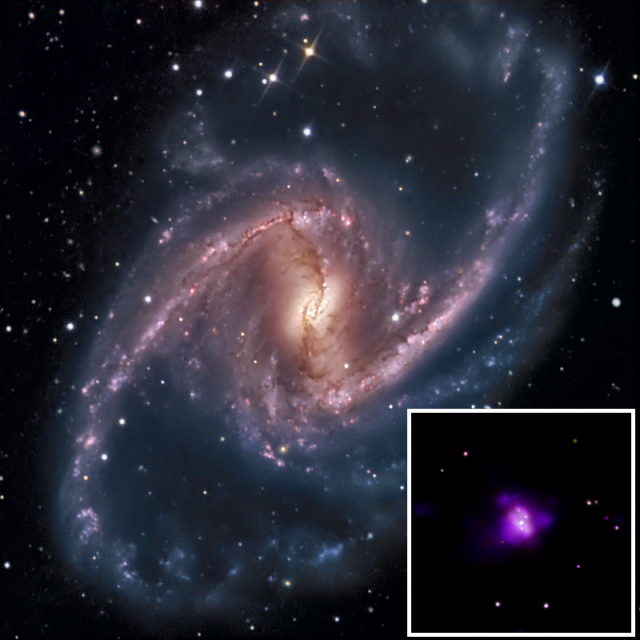X-rays spotted bouncing off relativistic matter spiraling into black hole
Ars Technica » Scientific Method 2013-02-27

The space near black holes is one of the most extreme environments in the Universe. The bodies' strong gravity and rotation combine to create rapidly spinning disks of matter that can emit huge amounts of light at very high energies. However, the exact mechanism by which this light is produced is uncertain, largely because high-resolution observations of black holes are hard to do. Despite their outsized influence, black holes are physically small: even a black hole a billion times the mass of the Sun occupies less volume than the Solar System.
A new X-ray observation of the region surrounding the supermassive black hole in the Great Barred Spiral Galaxy may have answered one of the big questions. G. Risaliti and colleagues found the distinct signature of X-rays reflecting off gas orbiting the black hole at nearly the speed of light. The detailed information the astronomers gleaned allowed them to rule out some explanations for the bright X-ray emission, bringing us closer to an understanding of the extreme environment near these gravitational engines.
Despite the stereotype of black holes "sucking" matter in, they attract it via gravity. That means stars, gas, and other things can fall into orbits around black holes, which may be stable for long periods of time. Gas often forms accretion disks and jets that release huge amounts of energy in the form of light. This energy can include X-ray emissions. So despite their name, black holes can be very luminous objects.
Read 6 remaining paragraphs | Comments